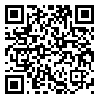BibTeX | RIS | EndNote | Medlars | ProCite | Reference Manager | RefWorks
Send citation to:
URL: http://ijdld.tums.ac.ir/article-1-5256-en.html
2- Department of Biology, Faculty of Sciences, Shahid Chamran University, Ahvaz, Iran
3- Department of Genetic, Faculty of Sciences, Shahid Chamran University, Ahvaz, Iran
4- Department of Pathobiolog, Faculty of ,Shahid Chamran University, Ahvaz, Iran
Background: The process of wound healing is impaired in diabetes. Many efforts have been made to accelerate the wound healing process. Long time healing effect of a herbal complex containing Aloe vera, Myrrh, dragon’s blood and henna has been observed in wound healing, But sufficient scientific evidence of how the mechanism of action of this compound is absent in diabetic wounds Whereas the effect of each of them separately in several studies on ulcers observed. The purpose of this study was to evaluate the effect of topical herbal (briefly called Herbalin) on wound healing in diabetic rats.
Methods: The diabetic rats were divided into two groups: control (treated with Vaseline as a vehicle) and experimental (treatment with herbalin) were included. In each class, all wound round with a diameter of2cmwas made on the dorsal surface of diabetic rats. Wound measurement and histopathological parameters such as the formation of re-epithelization, granulation tissue formation and the average thickness of the epithelium at intervals of7, 14and21dayswere evaluated. Strain epithelium on day 14andthe wound length atday21was evaluated in the terminal phase.
Results: In macroscopic study, the Herbalin treated wounds were found to healing much faster and the day 14 has considerable change compared with control group (P<0.05). In microscopic study, in all cases of the Herbalin treatment groups showed a significantly increased as compared with controls (P<0.05).
Conclusion: According to the results, the herbal complex, possibly by accelerating the formation of granulation tissue and epithelium and thickening of the epithelium has an important role in wound healing in diabetic and reduces the time required for healing.
Received: 2014/11/3 | Accepted: 2015/04/19 | Published: 2015/12/14
| Rights and permissions | |
 |
This work is licensed under a Creative Commons Attribution-NonCommercial 4.0 International License. |





